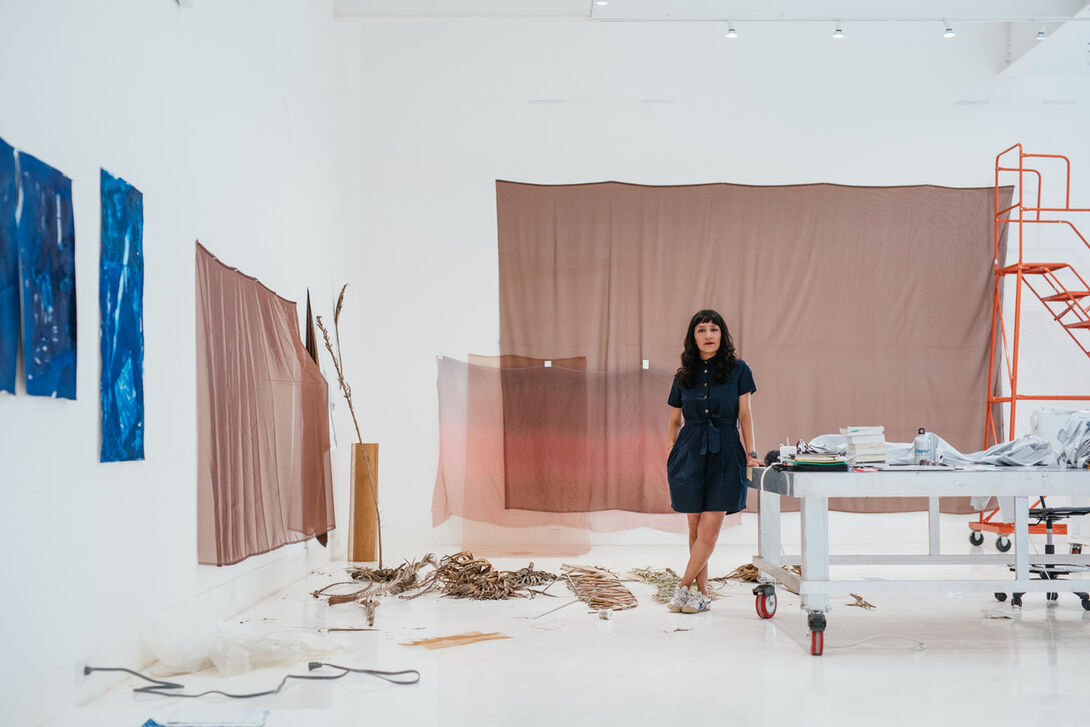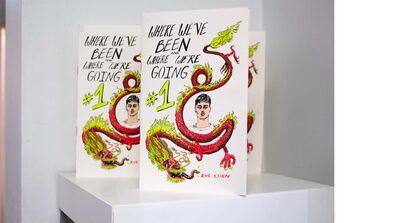
Maria Gaspar’s Power of Place
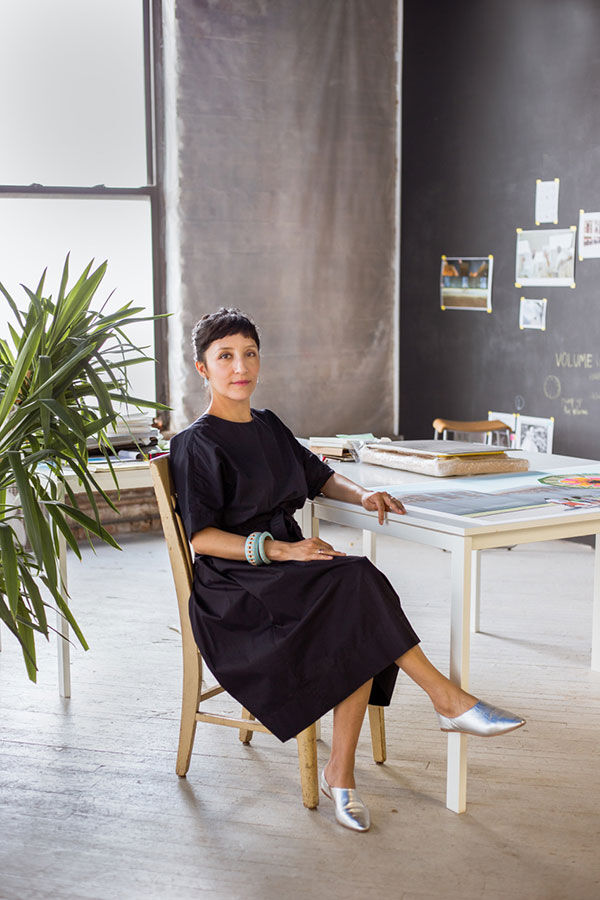
It’s impossible to understand Maria Gaspar without understanding where she grew up.
She was born and raised in Little Village, a neighborhood on Chicago’s West Side. Spanning a little less than three miles, it’s home to one of the largest Mexican American communities in the United States. Restaurants and grocery stores are run by families; community centers are staffed by neighbors. With local schools and social services often underfunded, the neighborhood creates what it needs. “At a very young age, I understood the power of being resourceful and radical in one’s way of thinking about how to reuse space or material,” Gaspar said.
Gaspar saw this in her own mother, a teacher’s aide at a public school who performed as a clown and worked as a local radio DJ on the weekends, broadcasting news updates and poetry in Spanish. “I remember listening to her strong voice from the waiting room, the on-air sign glowing bright red, and being so inspired.” Gaspar said. “I tell my students: there are many different ways to be an artist.”
This belief is central to Gaspar’s practice. Her projects span several mediums. She experiments with video, sound, installation, and performance. At the School of the Art Institute of Chicago (SAIC), she’s an associate professor in Contemporary Practices. She’s the recipient of an Imagining Justice Artist Grant, a Robert Rauschenberg Foundation Artist as Activist Fellowship, and a Creative Capital Award. Gaspar has served on the MacArthur Foundation’s Chicago Commitment Team, the Art for Justice Fund’s Advisory Council, and is now a part of Chicago’s Advisory Committee for the Memorials and Monuments Assessment Project. What unites all of her work is a commitment to investigating the relationship between power and place.
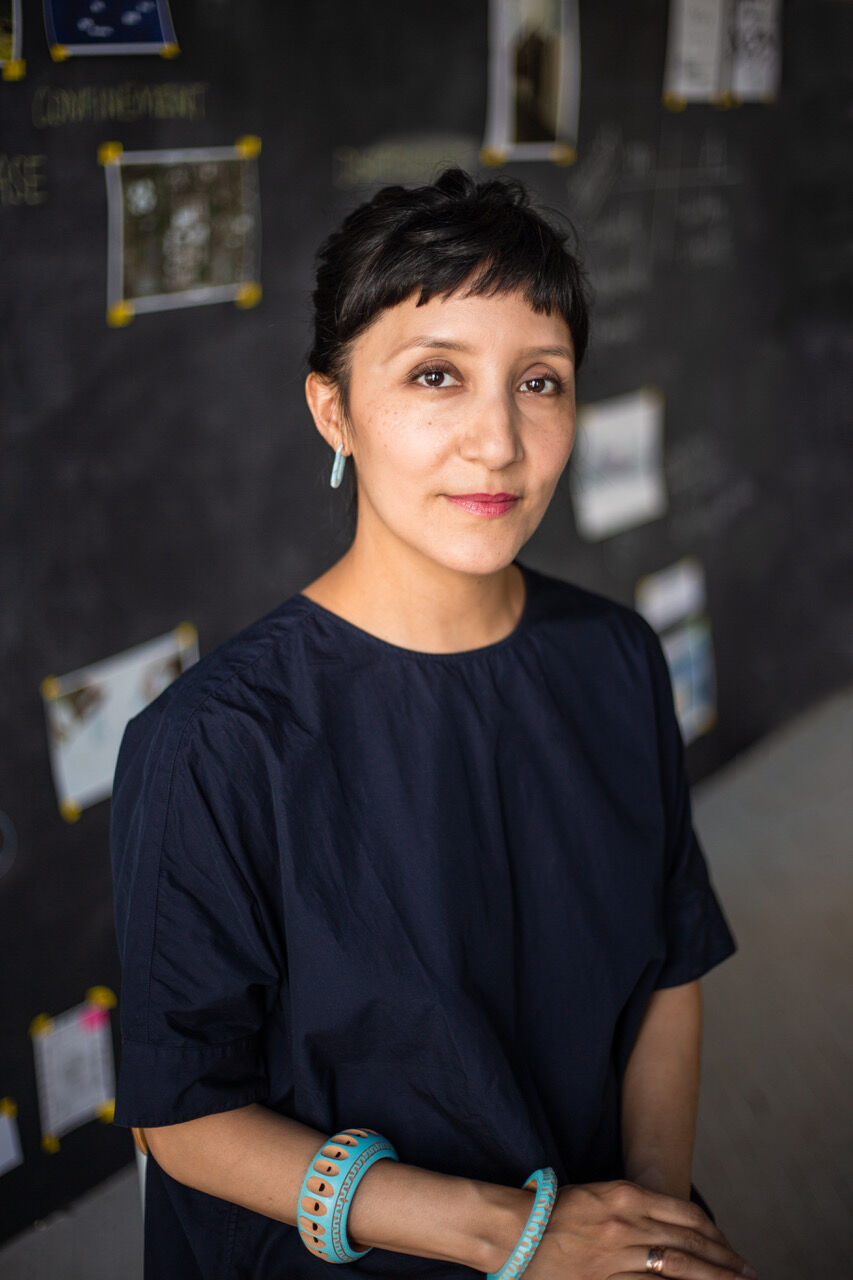
Photo: Zeltzin Vazquez
A piece of art isn’t just about paint on a surface, it’s about the surface itself. The brick, the dilapidated building, the impact of those textures. The meaning and history of those places changes the outcome of the work."
As a child, Gaspar wasn’t drawn to a specific art form. She performed alongside her mother as a clown at community events and backyard parties. “I was not a very good performer. I was very shy and timid,” Gaspar said. “But her spirited attitude was infectious.”
At home, they worked on countless projects together, crafting and painting. During high school, Gaspar traveled across the city to work with local muralists. As she took the train to new neighborhoods, she saw Chicago’s inequities up close, observing how different Little Village was from wealthier areas like Lincoln Park. She also began to understand the power of place as a medium. “It showed me how a piece of art isn’t just about paint on a surface, it’s about the surface itself. The brick, the dilapidated building, the impact of those textures. The meaning and history of those places changes the outcome of the work.”
Gaspar went on to study at Pratt Institute in New York. As the first in her family to go to college, her first three years were a struggle. Gaspar felt confined by her program’s narrow focus on painting, but during her senior year she met her mentor: the artist Ernesto Pujol. “He gave me permission to explore other materials. He saw art in the ways I saw art, as a way of interacting and engaging with the world in all these different ways and from the perspective of a Latinx person,” Gaspar said. She began to experiment with installation and unearth a practice completely her own.
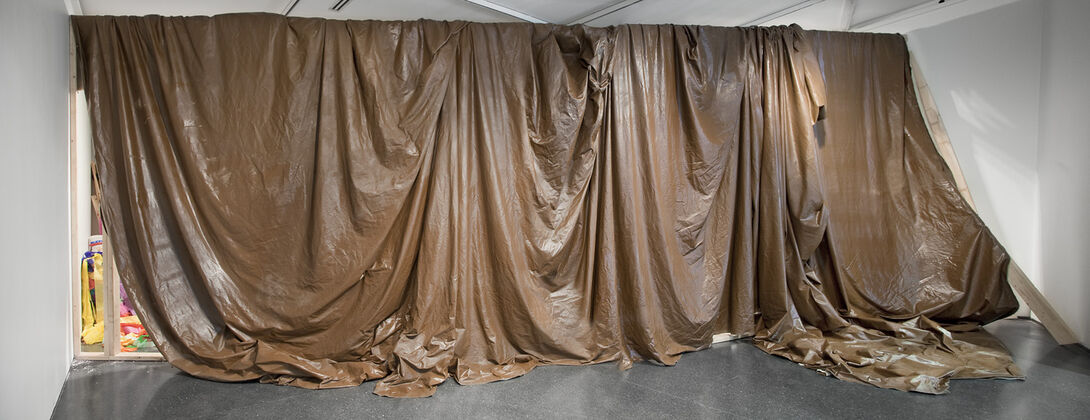
Maria Gaspar, Oblation for a Parade, 2009, cloth, latex, wood, streamers, confetti, and found objects.
After college, Gaspar’s work began to explicitly address the politics of place. “In my installation work, I’ve always been interested in interventions, in responding to the interior of the gallery or museum. I've tried to identify the key moments where power exudes itself and then find the ways, artistically, creatively, that one can counter it through the body or the work.” In Oblation for a Parade at Chicago’s Museum of Contemporary Art, Gaspar erected a brown “wall” out of a latex tarp to camouflage a space under construction. Security guards prevented visitors from approaching the tarp, an intentional restriction in a traditionally White gallery space.
In 2011, Gaspar started to feel that something was missing in her practice. She was exhibiting at major galleries and museums, but she felt that the impact of her work was diminishing. At the time, she was teaching art to students who were living in the neighborhoods she grew up in, which were often heavily policed. “I started to really think about what my responsibility was as a person in these communities,” Gaspar said. Walking through Little Village, she began to reflect on what it meant to have the largest architecture of the neighborhood she grew up in be the Cook County Department of Corrections and how it disproportionately affected Black and Brown families.
“I first visited the jail when I was about 12 years old through a Scared Straight program,” Gaspar said. “I was really affected by that visit. And then years later I had this moment of reflection, thinking there’s something we can do here to radically transcend this place of detention. This could be something powerful.”
The first piece Gaspar completed, titled Cook County Jail: The Visible and Invisible, is an audio documentary that asks Little Village residents and passersby to reflect on the impact of living next to the largest single-site jail in the country. In later pieces, Gaspar would bring the jail itself into gallery spaces. In Unblinking Eyes, Watching, she printed high-resolution images of the north end of the jail to scale and plastered them onto the wall of the Chicago Cultural Center. In this work, Gaspar forces the viewer to think about the presence and proximity of these detention sites and our own relationships to power.
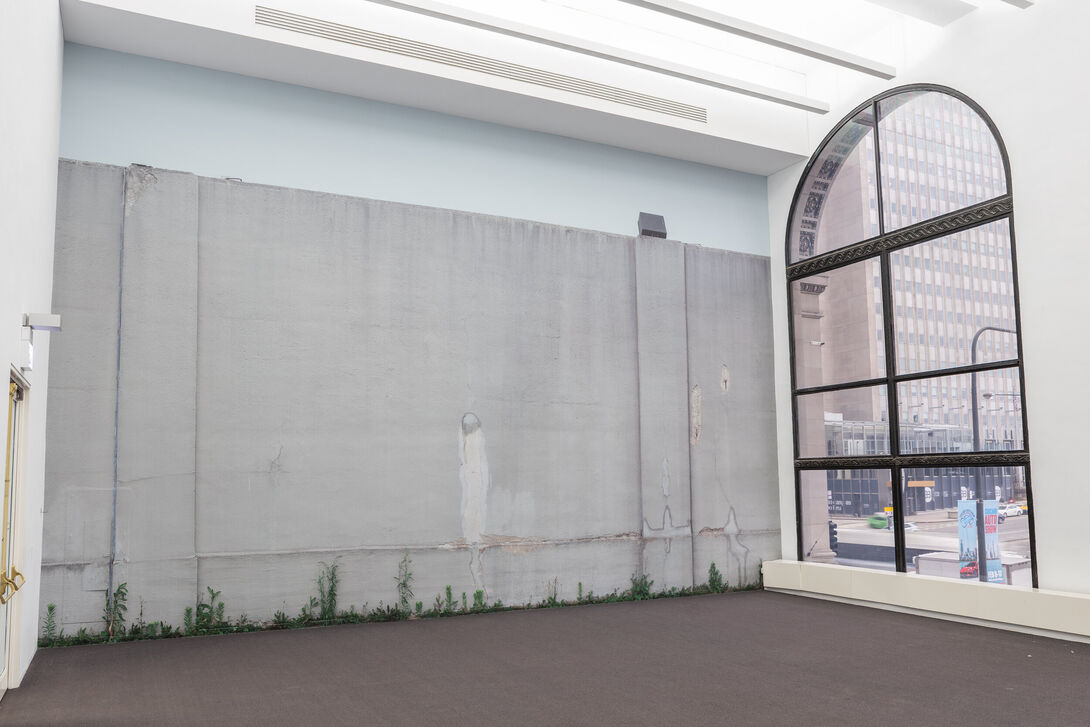
Maria Gaspar, Unblinking Eyes, Watching, 2019, vinyl adhesive. Photo: Claire Britt
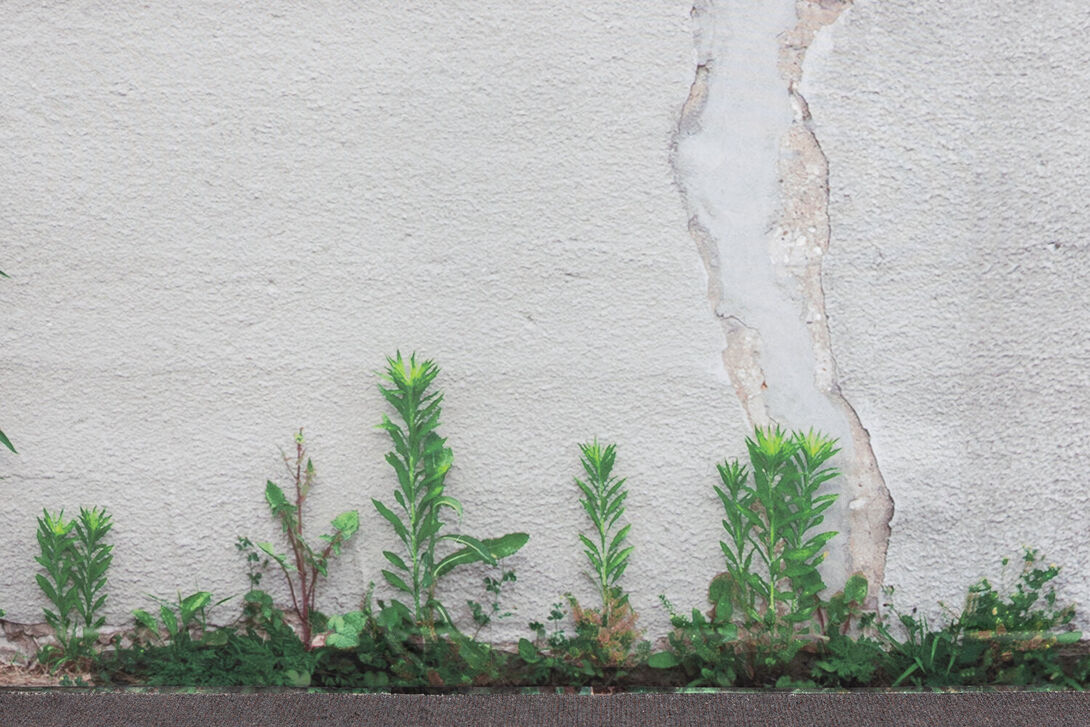
Close-up of Unblinking Eyes, Watching. Photo: Claire Britt
Gaspar’s most profound pieces centered around the Cook County Department of Corrections are those where she’s collaborated with incarcerated individuals. In Radioactive: Stories from Beyond the Wall, she led workshops within the jail, helping detainees produce audio art and animations. The final pieces were then broadcast on the jail’s outer walls, inviting the public within.
“Producing a cohesive public piece with others has so many challenges,” Gaspar said. “When one is working with others the stakes are so high, especially when it’s with people that have been historically marginalized and continue to be disenfranchised. It is drastically different from experimenting in your studio as a solo artist.”
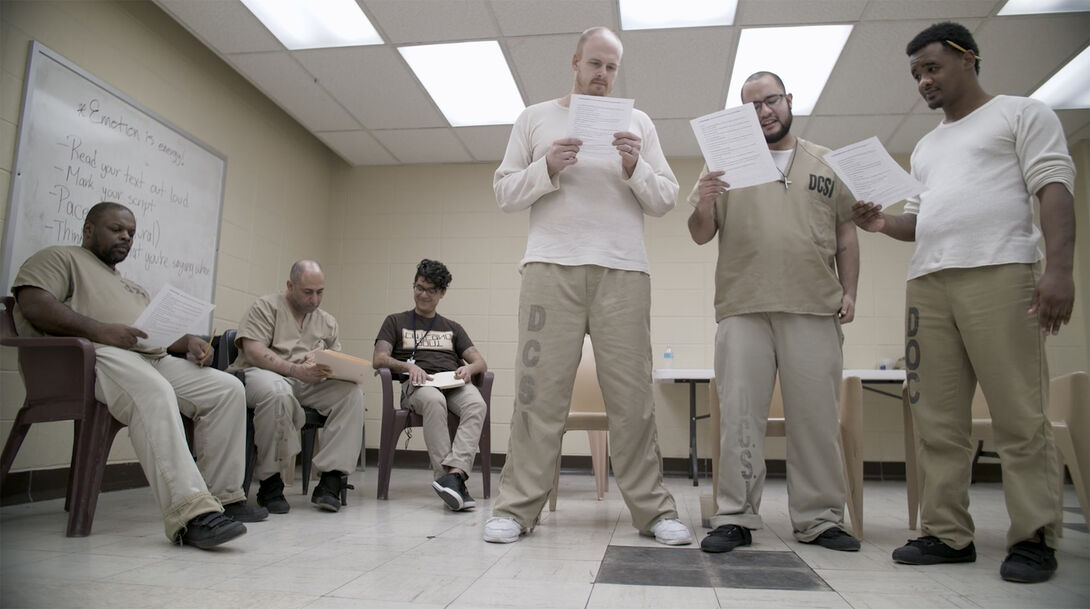
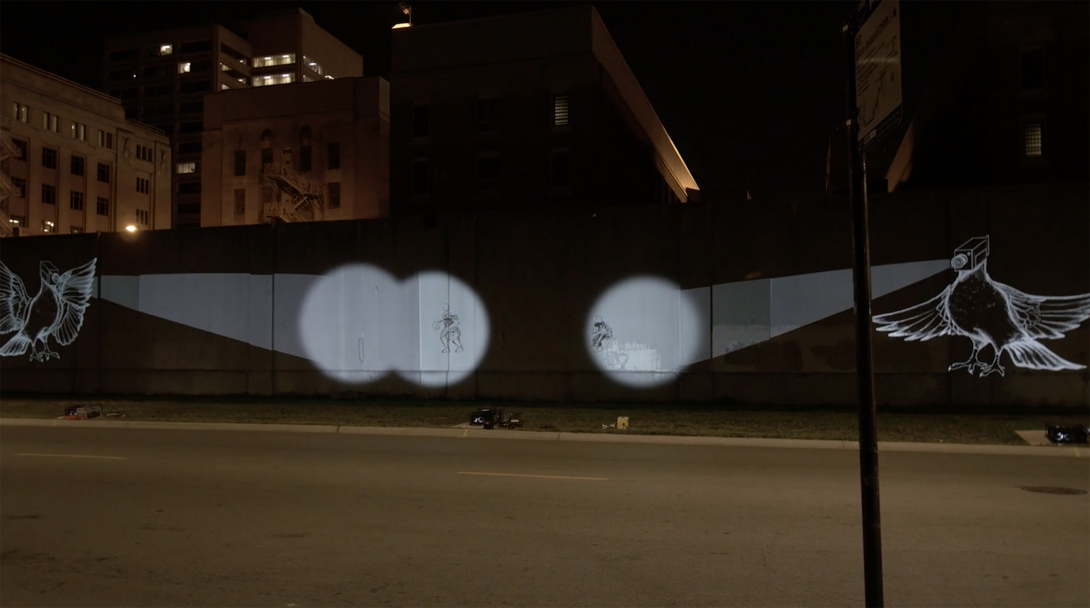
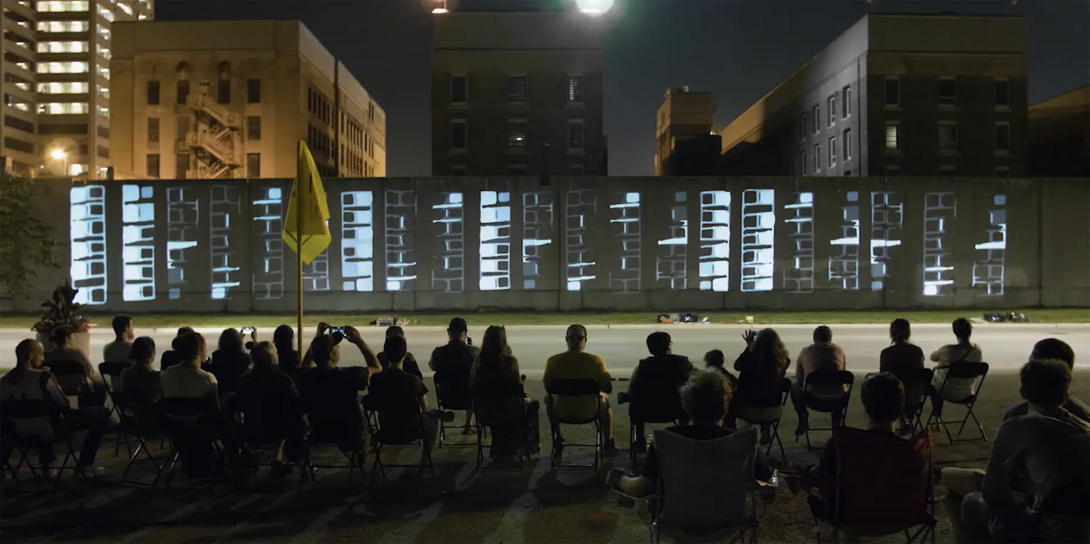
Stills from Radioactive: Stories from Beyond the Wall.
Although Gaspar felt the weight of that responsibility, the rewards were immense. “There were moments when we were really involved in a creative process that felt so unknown and strange and exciting. And it goes to show that this doesn’t just happen in the studios of an academic space,” Gaspar said. “There are many misconceptions about incarcerated people. But together, we are pulling that apart completely and instead offering something tender and sharp in order to challenge the racialized notions of criminalization. And that is a very moving experience. It's transformative. It really shows the power of art.”
Since the pandemic began in March, Gaspar’s investigations into institutions and power have become even more prescient. The Cook County Department of Corrections became one of the state’s epicenters for COVID-19 infection, and Gaspar was no longer allowed within its walls. “My social practice work is very intimate,” Gaspar said. “And I’ve been thinking about how I can continue to produce socially engaged work during a time of social distancing.”
In her recent piece Soy Paz, Soy Más Gaspar soared above these restrictions, writing a message of love and peace in skywriting over the Coastal Bend Detention Facility in Robstown, Texas. The piece was part of In Plain Sight, a nationwide project conceived by Cassils and rafa esparza in which 80 artists united to spread messages in protest of mass incarceration and detention centers.

Maria Gaspar, Soy Paz, Soy Más, 2020, sky-typed message above Coastal Bend Detention Center. Photo: Ronald L. Jones

Close-up of Soy Paz, Soy Más. Photo: Ronald L. Jones
With the protests against police brutality inspiring new conversations about institutional power, Gaspar has also been thinking deeply about her role within the communities of which she’s a part. At SAIC, she serves on the School’s Anti-Racism Committee, which was formed to catalyze diversity, equity, and inclusion work throughout all areas of the School. “My job as a teacher is about getting my students to understand how art can give them a space to think critically about the world around them, so they can bear witness and create change,” Gaspar said. “If we’re trying to be radical in our thinking, we also need to propose radical ways of working.”
Even over Zoom, Gaspar wants her classroom to be an inclusive and inspiring place. A place where students can learn to be resourceful and understand there are many different ways of making and being, a place not unlike the neighborhood where she grew up. “Teaching and learning is such a magical and transformative process and it must include justice,” Gaspar said. “Working with others, whether it be people on my block, in another neighborhood, or at SAIC, it’s an opportunity to engage, to understand one another, and to challenge the systems that continue to divide and oppress. Artists produce culture and culture produces movements. I want my students to feel empowered so that they can be bold and courageous and work toward a more liberatory future."
My job as a teacher is about getting my students to understand how art can give them a space to think critically about the world around them, so they can bear witness and create change.”
